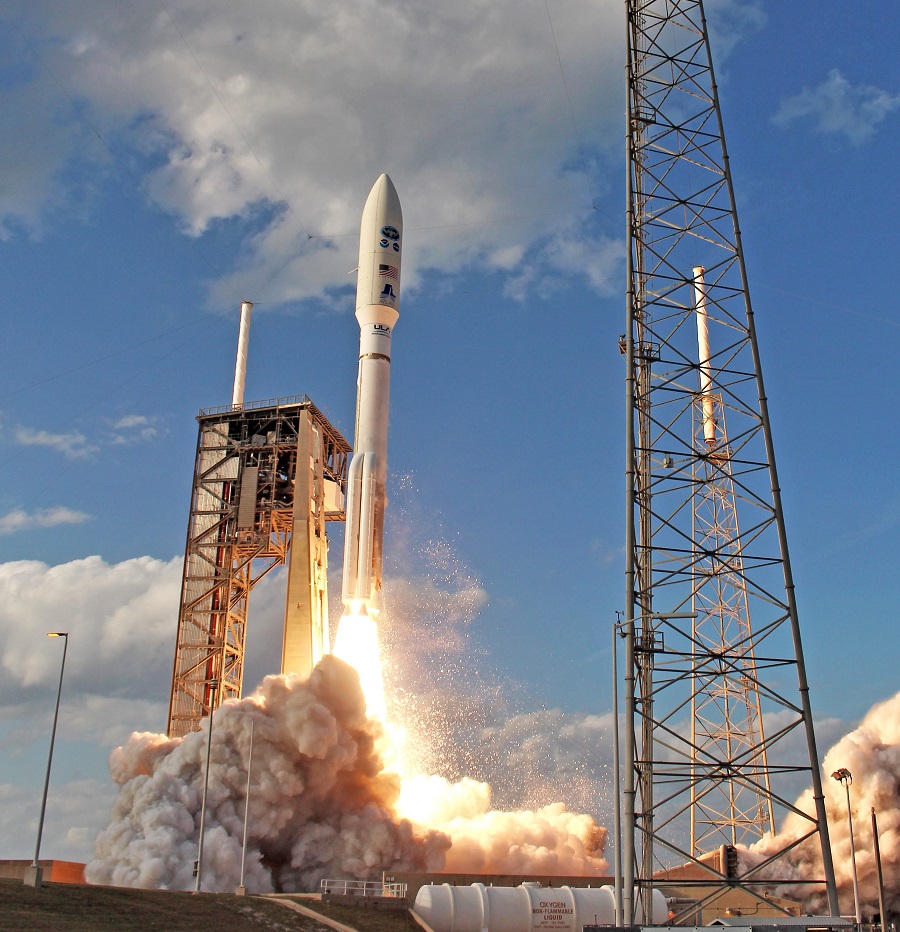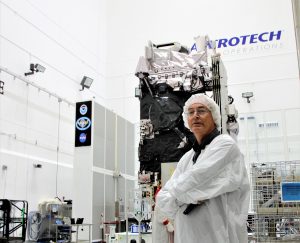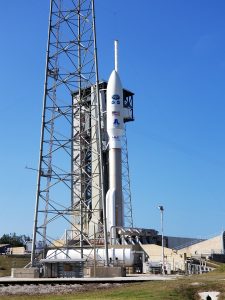
After a successful launch on Thursday evening, NASA and NOAA have confirmed that the GOES-S weather satellite launch was a complete success. A United Launch Alliance (ULA) Atlas V rocket carrying the GOES-S mission for NASA and NOAA lifted off from Space Launch Complex-41 on March 1 at 5:02pm. GOES-S is the second satellite in the Geostationary Operational Environmental Satellite (GOES)-R series of satellites, which have played a vital role in weather forecasting, storm tracking and meteorological research.
Miss our live stream of tonight's #GOESS launch? Here it is, from high atop the VAB at @NASAKennedy . Stunning launch! Great job @NASA, @NOAA, @NWS, @ulalaunch , @HarrisCorp , @LockheedMartin , @NOAASatellites , & countless partners that made today's event possible! pic.twitter.com/S3ohzJHrmi
— the Weatherboy (@theWeatherboy) March 2, 2018

“We at NASA Science are proud to support our joint agency partner NOAA on today’s launch of GOES-S, a national asset that will impact lives across the Western Hemisphere each and every day,” said Thomas Zurbuchen, NASA associate administrator for science, who attended Thursday’s launch.
Once GOES-S is positioned in a geostationary orbit 22,300 miles above Earth, in approximately two weeks, it will be renamed GOES-17. After undergoing a full checkout and validation of its six high-tech instruments, the new satellite will move to the GOES-West position and become operational in roughly 6 months from now. From there, it constantly will provide advanced imagery and atmospheric measurements, real-time mapping of lightning activity, and improved monitoring of solar activity and space weather.
In addition to improving weather forecasts, GOES-17 will help forecasters locate and track wildfires – invaluable information that emergency response teams need to fight fires and evacuate people out of harm’s way. GOES-17 also will be an important tool for forecasters to track and predict the formation and dissipation of fog, which can disrupt airport operations.
“Thank you to our partners at NASA and NOAA for the outstanding teamwork, as we delivered this next-generation satellite to orbit,” said Gary Wentz, ULA vice president of Government and Commercial Programs. “We are proud to serve as the ultimate launch provider, continuing our dedication to 100 percent mission success.”

GOES-S will join GOES-R in space. GOES-R was successfully launched by an Atlas V rocket on November 19, 2016. The next-generation GOES-R, now known as GOES-EAST, scans the Earth five times faster at four times the image resolution, with triple the number of data channels than previous GOES satellites for more reliable forecasts.
This mission was launched aboard an Atlas V Evolved Expendable Launch Vehicle (EELV) 541 configuration, which includes a 5-meter payload fairing. The Atlas booster for this mission was powered by the RD AMROSS RD-180 engine. Aerojet Rocketdyne provided the four AJ-60A solid rocket boosters and the RL10C-1 engine for the Centaur upper stage.
This is the 76th launch of the Atlas V rocket, ULA’s 3rd launch in 2018 and the 126th successful launch since the company was formed in December 2006. ULA has bragging rights of launching the entire GOES series of weather satellites since 1975.